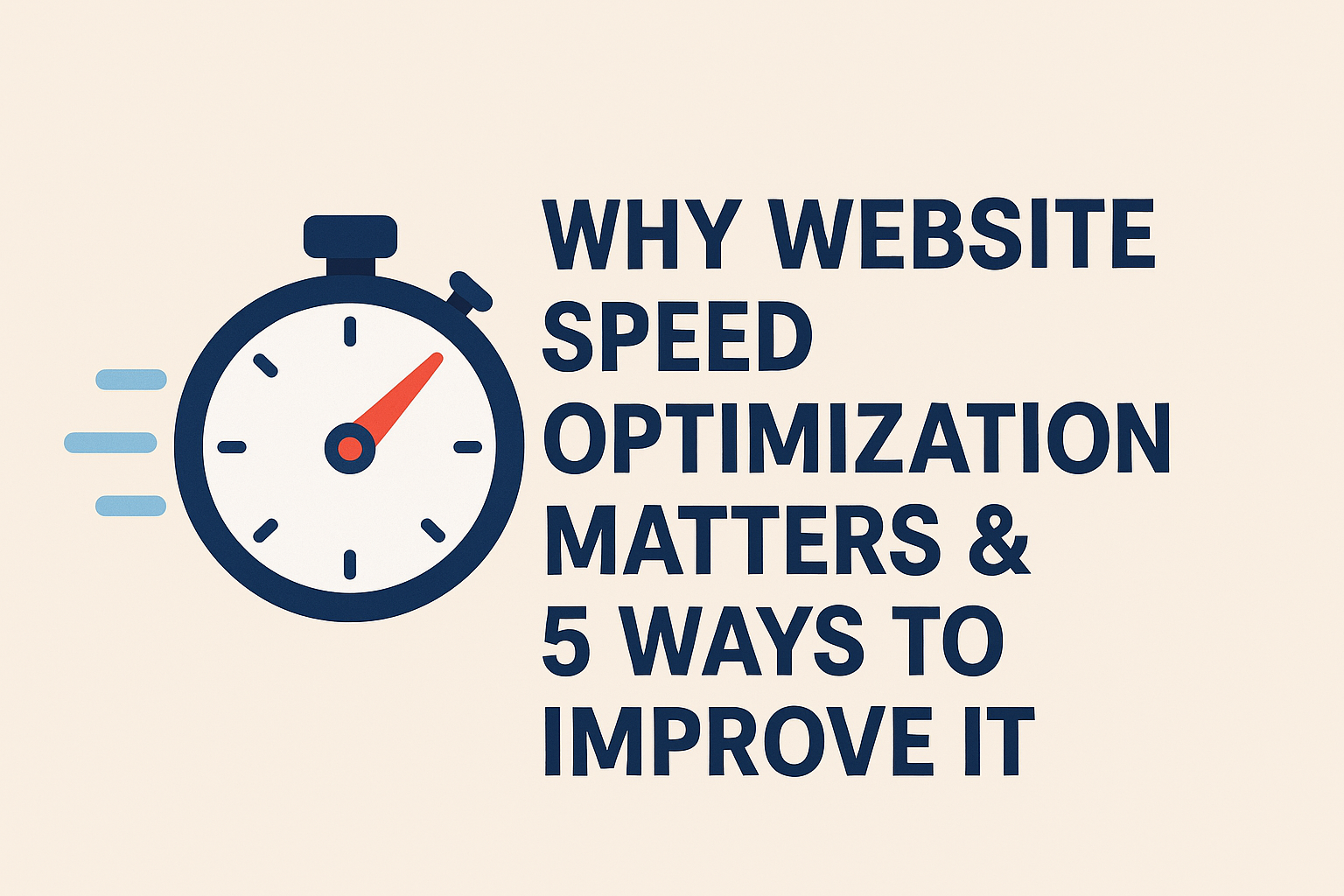5 Ways to Improve Website Speed

- Why Website Speed Optimization Matters & 5 Ways to Improve It
- On-Page vs. Off-Page SEO: Strategies for Maximum Visibility
- Secure Scalable Hosting
- Choosing Your Ecommerce Platform: Shopify, WordPress, or Hostinger?
- What Is PPC? A Starter Guide to Pay-Per-Click Marketing
- Uncover Key Insight with Ecommerce Market Research
- Managed Hosting Vs Self-managed
Why Website Speed Optimization Matters & 5 Ways to Improve It
Website speed optimization has evolved from being a nice-to-have feature to a critical component of digital success. With the modern consumer's short attention span and high expectations, website speed can determine whether your business thrives or fails online. In this extensive guide, we’ll delve deeply into why speed optimization matters so significantly and explore five actionable strategies to enhance your website’s performance.
Why Website Speed Matters
The importance of website speed extends across several critical areas of online success:1. Enhanced User Experience (UX)
Today's online users expect instant gratification. Slow-loading websites frustrate visitors, leading to negative experiences, increased bounce rates, and a significant reduction in customer loyalty. Users typically abandon a website that takes longer than three seconds to load, negatively impacting customer retention and brand reputation.2. Improved Search Engine Optimization (SEO)
Google and other search engines prioritize fast-loading sites in search rankings. Page speed directly affects your website’s visibility on search engine result pages (SERPs). Slow websites rank lower, resulting in less organic traffic and diminished online visibility.3. Higher Conversion Rates
Studies consistently show that faster websites achieve higher conversion rates. A delay of just one second can lead to substantial drops in conversion rates, particularly impacting ecommerce businesses where speed directly correlates to sales revenue.4. Stronger Brand Reputation
Speed directly impacts your brand’s perceived professionalism and trustworthiness. A fast, responsive website conveys reliability, efficiency, and a commitment to customer satisfaction, enhancing your overall brand reputation.5. Competitive Advantage
In competitive markets, website speed can differentiate your business from competitors. Websites that perform faster than industry averages provide a superior customer experience, attracting and retaining more visitors and customers.5 Ways to Improve Website Speed
Here are five in-depth strategies to optimize your website’s performance effectively:1. Optimize and Compress Images
Images typically consume the largest share of data on a webpage, making them one of the most critical aspects to address for speed optimization.- Use Compression Tools: Tools like TinyPNG or ImageOptim effectively compress images without losing significant quality.
- Choose the Right Format: JPEG is ideal for photographs, while PNG suits graphics with transparency. SVG is excellent for vector-based graphics.
- Responsive Images: Employ responsive image techniques to serve appropriately sized images based on device screen sizes, reducing load times and bandwidth usage.
2. Leverage Browser Caching Effectively
Browser caching stores static files locally, significantly reducing load times on subsequent visits by the same users.- Implement Caching Plugins: Plugins like WP Super Cache or W3 Total Cache help automate browser caching on WordPress sites.
- Set Proper Expiry Headers: Configure server settings to specify how long browsers should store static files, greatly reducing server requests.
- Regular Cache Management: Ensure caches are cleared appropriately when content is updated, maintaining accurate and current page displays.
3. Minimize HTTP Requests and Optimize Code
Reducing HTTP requests dramatically improves load speeds, as each request adds load time.- Combine Files: Consolidate CSS and JavaScript files to decrease the total number of requests.
- Eliminate Unnecessary Plugins: Regularly audit and remove unnecessary plugins or scripts that add overhead and slow your site down.
- Use CSS Sprites: Combine multiple images into one file to reduce HTTP requests and significantly speed up loading.
- Minify and Compress Code: Minify CSS, JavaScript, and HTML files by removing unnecessary whitespace and comments, reducing file sizes substantially.
4. Enable Gzip Compression
Enabling Gzip compression significantly reduces the size of web files by compressing them before sending them to users' browsers.- Activate via Server Settings: Enable Gzip compression directly in your server settings or through your hosting control panel.
- Validate Compression: Regularly test your site using tools like Google PageSpeed Insights or GTmetrix to ensure proper implementation and effectiveness of Gzip.
- Consistent Monitoring: Continuously monitor compression efficiency and adjust settings as needed to optimize loading speeds.
5. Utilize a Content Delivery Network (CDN)
A CDN significantly boosts website speed by distributing content across global servers, thus serving content from locations nearest to your visitors.- Global Distribution: CDNs reduce latency by serving content from servers geographically closer to your audience.
- Reduced Server Load: By offloading bandwidth demands, CDNs reduce traffic load on your primary server, enhancing site speed and stability.
- Improved Reliability: CDNs help prevent site downtime, ensuring consistent website performance even during traffic spikes.
- Easy Integration: Popular CDNs like Cloudflare or Amazon CloudFront integrate seamlessly with most websites and hosting services.

